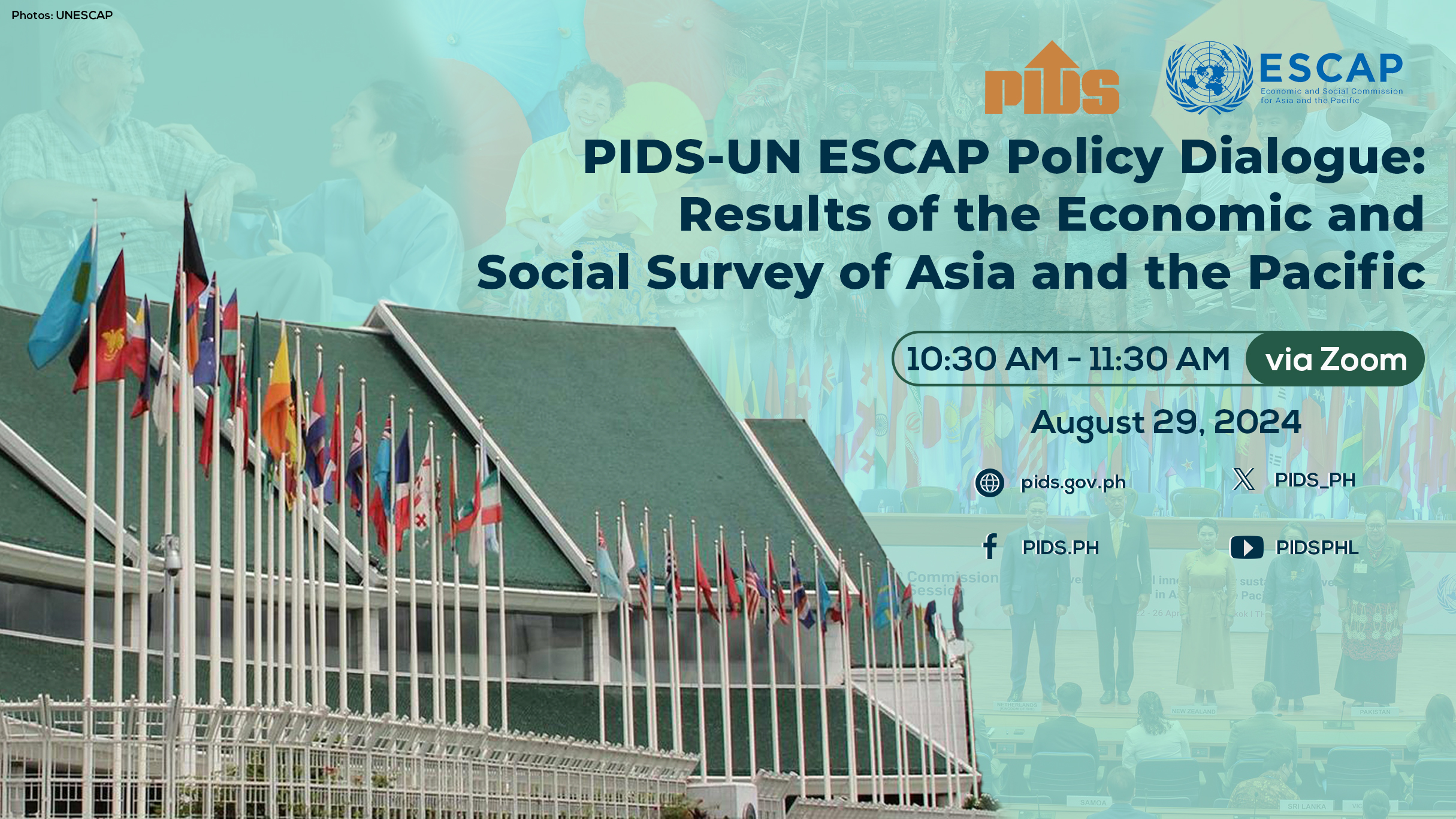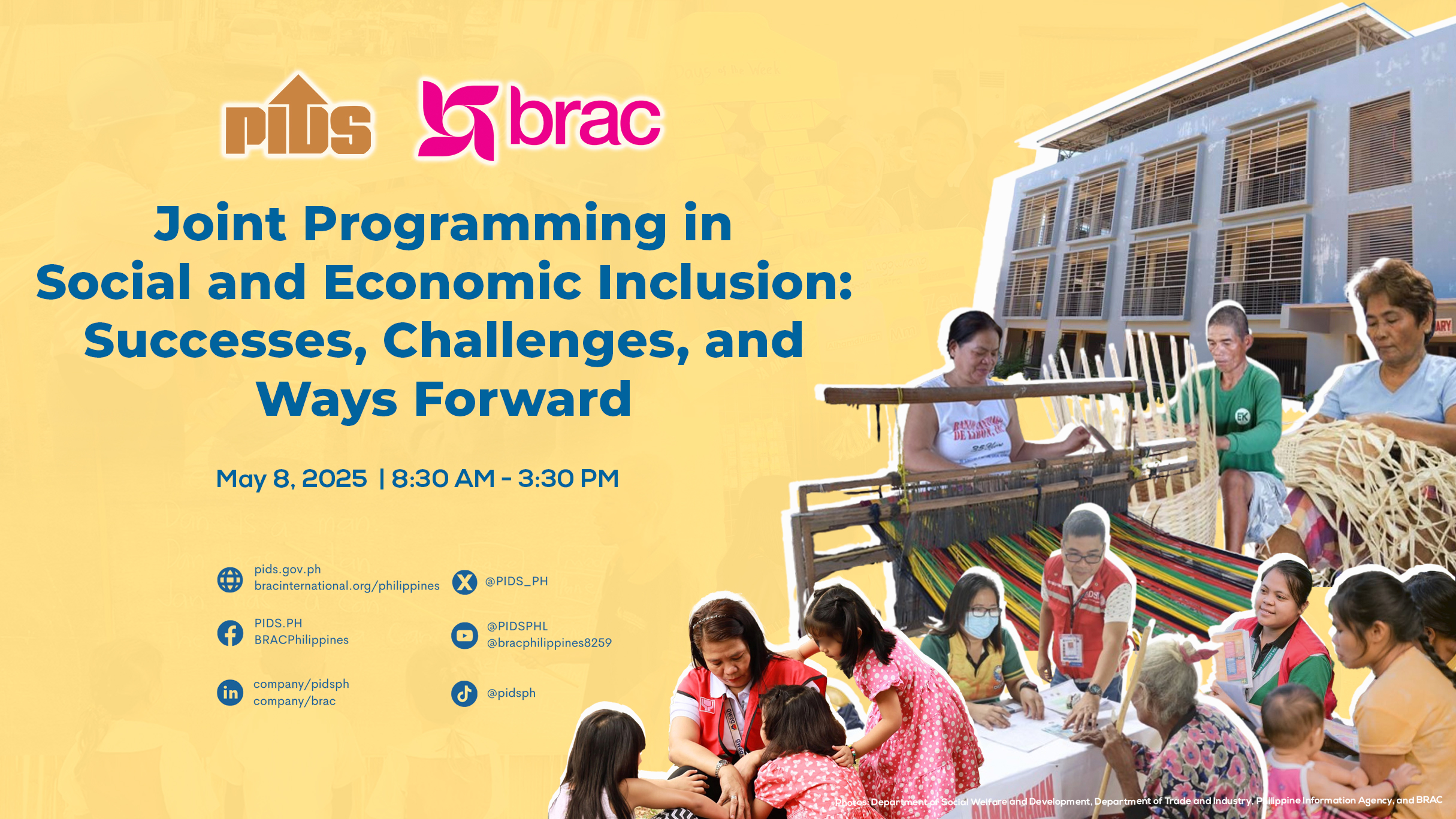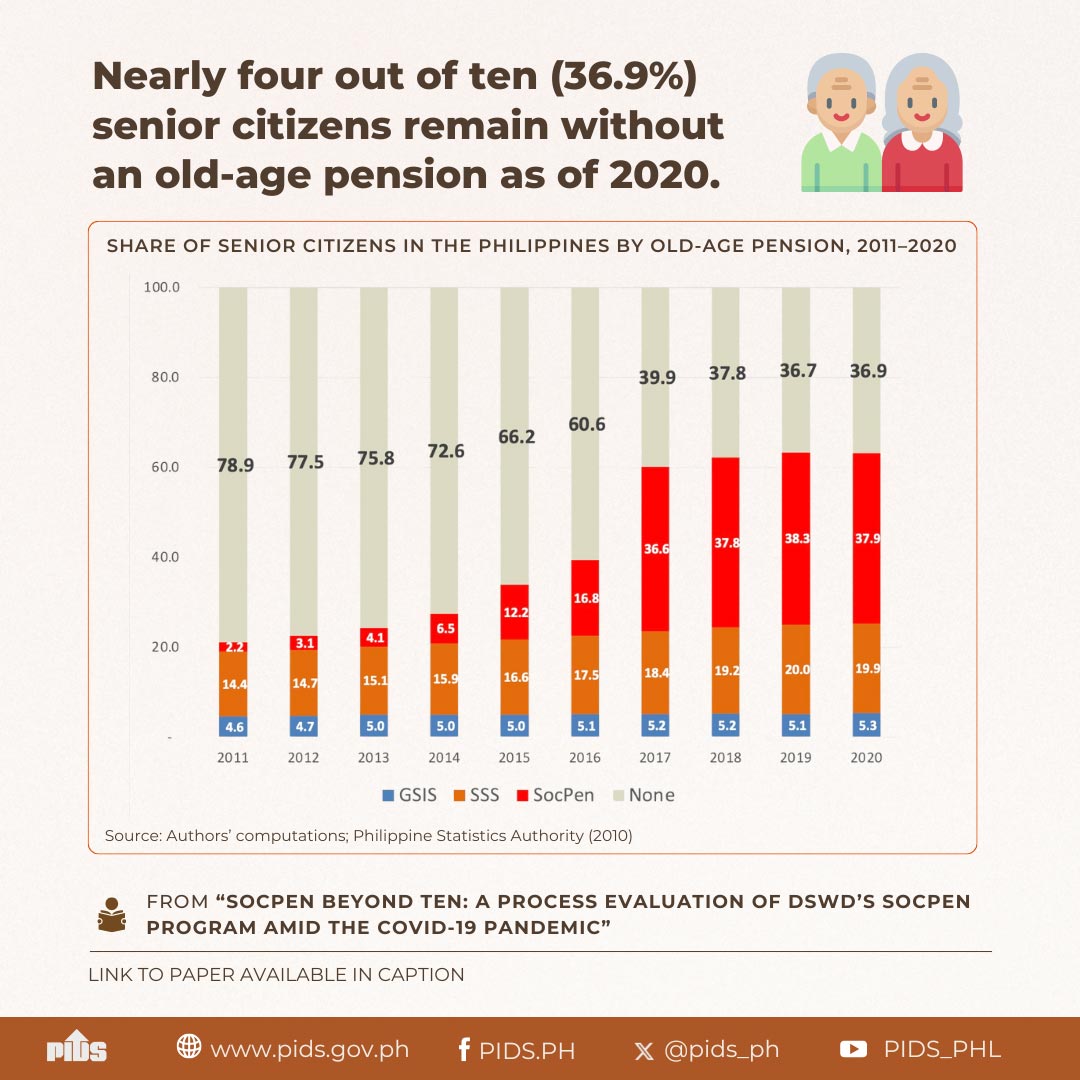THE Philippines needs to invest more on social protection to help workers cope with external shocks and address “stubborn challenges” such as poverty and inequality, according to an international expert.
In a webinar of the Philippine Institute for Development Studies (PIDS) 7th annual public policy conference (APPC), United Nations Economic and Social Commission for Asia and the Pacific Social Development Division Director Srinivas Tata said the country only spends 2.6 percent of GDP on social protection, excluding health-care spending.
He said except for Timor Leste, all Asean countries’ spending on social protection is below the Escap average of 4.9 percent of GDP. The global average is at 11 percent of GDP while the European average is at 17 percent.
“Often investments in healthcare and social protection are seen as a cost while building a new bridge or a new road may be seen as an investment. This view, as we know, is skewed,” Tata said.
“It is important to understand that investing in people will have a huge return on the country’s development. Countries should not wait to become rich before such investment in the social sector is done,” he added.
In the Philippines, Tata said social protection only covered less than 40 percent of Filipinos, and only a handful of countries in the region have comprehensive coverage.
“More than half of the region’s population is left completely unprotected against any contingencies throughout their lives. Excluding China, two-thirds of the region’s population are left completely uncovered,” Tata said.
Providing social protection is needed to address poverty seen in many parts of the world, including Asia and the Pacific. Tata said this is despite the “impressive economic growth” of the region in the past decade.
Tata said 26 percent or 175 million of the Asia Pacific region live on less than $1.9 per day, the global extreme poverty line. At $3.2 per day, the number increases to almost 900 million poor people in the region.
In the Philippines, about 4.6 percent or 5 million of the population still live in extreme poverty or below $1.9 per day. At $3.2 per day, the poverty increases to 25 percent or around 27 million people.
Widening inequality is also a “stubborn” challenge that can be eased with adequate social protection. Inequality is not only about income, Tata said, but also about access to services that open doors to economic and social opportunities.
One such access is for internet services. Tata said that in the Philippines, the access of poor individuals aged 35 and over to the internet is only 13 percent, but it is 97 percent for richer individuals aged 15 to 34 years old.
“The chart shows that the overall access is 60 percent, that’s the average. However, if you compare the access rate between the best off and the worst off, you see the gap between the worst off and the people who are best placed,” Tata said.
Another challenge in providing social protection is the large share of informality among workers in the region, including the Philippines.
In Asia Pacific, close to 70 percent or 1.3 billion of all workers are part of the informal sector, Tata said. This means these people, he said, often do not have contracts, perform hazardous jobs, and do not have access to stable salaries or social protection.
The latest Labor Force Survey results released by the Philippine Statistics Authority (PSA) show the number of Filipinos invisibly underemployed grew 111.2 percent in July 2021. This means an increase of 2.196 million Filipinos in this category to 4.172 million in July 2021 from 1.976 million in July 2020.












